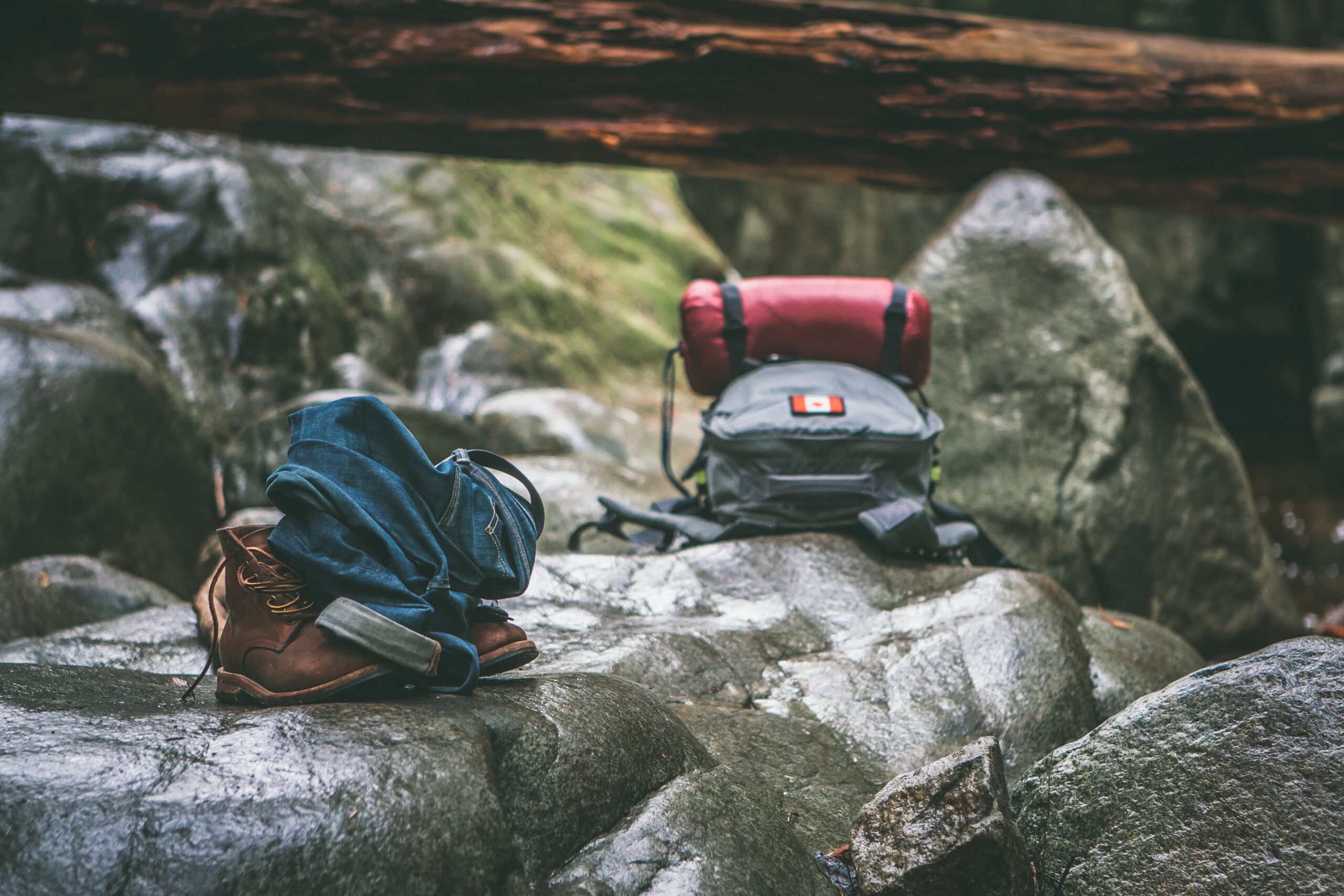Survival situations can be overwhelming and stressful, especially if you are unprepared. However, by learning from common mistakes that people often make, you can greatly increase your chances of staying safe and getting through difficult circumstances. In this article, we will explore some of the most common survival mistakes to avoid, providing you with valuable insights and tips to help you navigate through any challenging situation with confidence. So, whether you enjoy outdoor adventures or simply want to be prepared for any unexpected event, this article is a must-read for anyone looking to avoid common survival mistakes.
Choosing the Right Gear
When it comes to survival, having the right gear can make all the difference. Assessing your needs is the first step in choosing the right gear. Consider the environment you will be in, the duration of your journey, and the activities you will be engaging in. Will you be hiking in the mountains or camping in the desert? Will you be spending a few days or a few weeks in the wilderness? Answering these questions will guide you in selecting the appropriate gear.
Researching and testing the gear is essential before making a purchase. Read reviews, compare different brands, and talk to experienced outdoor enthusiasts to get recommendations and advice. Once you have a list of gear options, test them out whenever possible. Take a short backpacking trip or spend a night camping to see how the gear performs in real-world conditions. This way, you can ensure that the gear meets your needs and will withstand the challenges of survival situations.
Investing in quality gear is crucial for your safety and comfort. While it may be tempting to opt for cheaper options, remember that your gear is your lifeline in the wilderness. Invest in durable and reliable products that will last. Quality gear is often more efficient, lightweight, and resistant to wear and tear. It may seem like a significant investment upfront, but it will pay off in the long run.
Consideration for climate and terrain is also essential when choosing your gear. Different environments require different equipment. For example, if you’re hiking in a cold climate, investing in proper insulation and layering systems is vital. If you’re exploring rugged mountainous terrain, sturdy boots with ankle support are a must. Tailor your gear selection to fit the challenges presented by the climate and terrain you will be encountering.
Planning and Preparation
Understanding the environment you will be in is key to planning a successful survival expedition. Research the area thoroughly, including weather patterns, wildlife, and any potential hazards. Familiarize yourself with the specific challenges and risks that might arise, such as extreme temperatures, sudden storms, or dangerous animals. This knowledge will help you make informed decisions and prepare adequately for the journey ahead.
Creating a detailed itinerary is crucial for ensuring a safe and efficient trip. Outline each day’s activities, planned routes, and estimated travel times. Take into account factors such as rest stops, meal breaks, and potential emergency scenarios. Sharing your itinerary with a trusted friend or family member is also advisable, as it provides an extra layer of safety and ensures someone knows your plans.
Studying basic survival skills is essential for any adventurer. Learn how to build a fire, construct a shelter, find and purify water, and navigate using a map and compass. Familiarize yourself with first aid techniques and learn how to treat common injuries and illnesses. These skills will give you the confidence and knowledge to handle unexpected situations and increase your chances of survival.
Communications and emergency planning should not be overlooked. Have a reliable means of communication, whether it’s a satellite phone, a two-way radio, or a signaling device. Create an emergency plan that includes how to signal for help, who to contact in case of an emergency, and how to stay safe while waiting for assistance. Being prepared for unforeseen circumstances can be a lifesaver in critical situations.

Navigation and Orientation
Carrying a map and compass is a fundamental part of being prepared. These tools can help you navigate and orient yourself in unfamiliar terrain. Familiarize yourself with map reading and compass usage before your trip, so you can confidently find your way. A map and compass are reliable backup tools, especially when technology fails or batteries run out.
Using GPS and navigation apps can greatly assist in navigating the wilderness. These tools can provide real-time information about your location, elevation, and distance traveled. They can also help you plan and track your route. However, it is important to have a backup plan in case your device malfunctions or loses signal. Always carry a map and compass as a fail-safe.
Reading topographic maps is a valuable skill for any adventurer. Topographic maps provide detailed information about the characteristics of the terrain, such as elevation, contours, and landmarks. Learning how to interpret these maps will enable you to navigate more accurately, identify potential hazards, and plan efficient routes.
Identifying landmarks and natural signs is another useful navigation technique. Memorize key features of the landscape, such as distinctive peaks, rivers, or rock formations, that can serve as reference points. Pay attention to natural signs, such as moss growing on the north side of trees or patterns in vegetation that indicate the presence of water. These skills will help you maintain your bearings and stay on track.
Packing Essential Supplies
When it comes to survival, packing the right supplies can mean the difference between life and death. Here are some essential items to consider bringing on your journey:
Food and water are crucial for sustaining your energy and hydration levels. Pack lightweight, nutritious, and non-perishable food items that can be easily prepared. Store them in waterproof containers to protect them from the elements. Carry an ample supply of clean drinking water or equip yourself with filtration systems or water purification tablets to make water safe for consumption.
A first aid kit is essential in addressing injuries and illnesses that may occur in the wilderness. Include items such as bandages, disinfectants, pain relievers, and any necessary medication. Familiarize yourself with the contents of your kit and learn how to use them correctly.
Shelter and sleeping gear are essential for protecting yourself from the elements and ensuring a good night’s rest. Consider bringing a lightweight tent, sleeping bag, sleeping pad, and a tarp for added protection. These items will provide shelter from harsh weather conditions and keep you warm and comfortable.
Fire starting tools are essential for warmth, cooking, and signaling for help. Carry waterproof matches, a lighter, or a fire starter kit. Additionally, learn how to start a fire using natural materials in case your tools fail or run out.
Multipurpose tools, such as a Swiss Army knife or a multi-tool, are invaluable in survival situations. These tools typically feature a variety of functions, including knives, scissors, pliers, and screwdrivers. They are versatile and can assist with a range of tasks, from repairing gear to preparing food.

Understanding Your Limitations
Assessing your fitness level is crucial for planning a successful survival expedition. Consider your physical stamina, endurance, and agility. Be realistic about your capabilities and choose activities and destinations that align with your fitness level. Pushing beyond your limits can not only compromise your safety but also dampen the overall experience.
Accounting for health conditions is vital when venturing into the wilderness. Certain medical conditions may require you to take precautions or adjust your plans. Consult with your healthcare provider before embarking on any physically demanding activities and discuss any necessary medications, treatments, or precautions.
Knowing your personal strengths and weaknesses can help you plan and make necessary adjustments. If you excel at navigation but struggle with building a shelter, focus on improving your shelter-building skills before your trip. Understanding where you need to improve and what you excel at will enhance your overall performance and confidence in survival situations.
Avoiding overexertion is key to preventing injuries and conserving energy. Pace yourself and take regular breaks to rest and replenish. Know when to stop and make camp for the night if you’re feeling fatigued or if the weather conditions worsen. Pushing yourself beyond your limits can lead to exhaustion, dehydration, and a higher risk of accidents or getting lost.
Building and Managing a Shelter
Choosing an appropriate location for your shelter is essential. Look for level ground, away from potential hazards such as falling rocks, dead trees, or areas prone to flooding. Consider natural features that can provide additional protection and insulation, such as large rocks or dense vegetation.
Understanding shelter design is crucial for constructing a sturdy and effective shelter. Familiarize yourself with different types of shelters, such as lean-tos, A-frame structures, or debris shelters. Learn how to utilize natural materials, such as branches, leaves, and rocks, to build a shelter that can withstand the elements.
Finding or building natural shelters can be a valuable skill in survival situations. Look for natural formations, such as caves, rock overhangs, or fallen trees, that can provide instant protection. Be cautious and assess any potential risks before using natural shelters, as they may have hidden dangers.
Utilizing emergency shelters is advisable when you don’t have the time or resources to build a full-fledged shelter. Emergency shelters, such as emergency blankets or bivvy bags, are lightweight and compact. They provide a quick and easy solution for temporary shelter and can be a lifesaver in unexpected situations.
Finding and Purifying Water
Locating reliable water sources is crucial for survival. Study the area you will be in and identify potential water sources, such as rivers, streams, or springs. Be cautious and avoid drinking from stagnant or contaminated water sources, as they can cause illness or even be life-threatening.
Understanding water safety is essential when it comes to drinking from natural sources. Even seemingly clean water can be contaminated with bacteria, viruses, or parasites. Purify all water before consuming it, regardless of how clean it appears. Avoid taking unnecessary risks by assuming that water is safe without proper purification.
Purification techniques can ensure that you have safe drinking water. Boiling is one of the most reliable methods for killing harmful microorganisms. If boiling is not possible, consider using water filtration systems, water purification tablets, or portable water filters. Learn how to use these purification methods effectively before your trip.
Water storage and transportation are also important considerations. Carry collapsible water containers or water bladders that allow you to store a sufficient amount of water. Additionally, bring a lightweight water filtration or purification device that enables you to purify water on the go. This way, you can replenish your water supply whenever you come across a reliable water source.
Starting and Maintaining a Fire
Choosing the right fire location is essential for safety and efficiency. Look for a location that is sheltered from wind, has a clear area for fire building, and is away from flammable materials. Avoid building fires near dry vegetation or overhanging branches that can catch fire.
Gathering firewood is necessary for starting and maintaining a fire. Collect dry wood from the ground, preferably dead and fallen branches. Look for different sizes of wood, from tinder (small, dry materials that catch fire easily) to larger logs that will provide a steady source of fuel. Remember to only gather wood from sustainable sources, avoiding live or protected trees.
Using various fire starting methods will increase your chances of success. Carry waterproof matches, a lighter, or a fire starter kit as reliable backup options. Additionally, learn alternative fire starting techniques such as using a flint and steel, fire plow, or bow drill. These primitive methods can be invaluable when you find yourself without modern tools.
Fire safety and extinguishing practices must always be followed to prevent accidents and forest fires. Clear the area around the fire pit from flammable materials and ensure that the fire is fully extinguished before leaving it unattended. Use water or dirt to fully extinguish the fire, and carefully check the surroundings for any remaining embers or hot spots.
Seeking and Signaling for Help
Using distress signals can significantly increase your chances of being rescued in a survival situation. Learn common distress signals, such as three short and three long whistle blasts, or three evenly spaced fires. These signals are recognized internationally and can attract attention from potential rescuers.
Building signal fires is an effective way to attract attention from afar. Choose an open area without overhanging branches or flammable materials. Create a large fire using dry and easily combustible materials. Maintain the fire by adding more fuel and monitoring it until help arrives.
Creating visible ground signals can also aid in signaling for help. Use rocks, logs, or branches to spell out letters S.O.S or create large arrow shapes that point towards your location. These signals can be easily spotted from the air or by ground rescuers.
Auditory signaling techniques can be effective in attracting attention in remote areas. Use a whistle, a horn, or even your voice to create loud, repetitive sounds. These sounds can carry over long distances and alert potential responders to your presence.
Managing Food and Nutrition
Hunting, fishing, and foraging are skills that can provide additional food sources in the wilderness. However, it is essential to have proper knowledge and training in these areas before relying solely on these methods. Familiarize yourself with local regulations, hunting and fishing seasons, and the identification of edible game and plants. Knowing how to safely hunt, fish, and forage can supplement your food supplies in the wild.
Proper food storage and preservation are essential for preventing spoilage and foodborne illnesses. Pack your food in waterproof and airtight containers to protect it from moisture and pests. Use coolers or insulated bags to keep perishable items fresh. Keep a safe distance from your shelter to deter wildlife from accessing your food supplies.
Avoiding foodborne illnesses is crucial for maintaining your health and well-being in the wilderness. Properly cook all meat and fish to kill any harmful bacteria or parasites. Wash your hands thoroughly before preparing food and store it at the correct temperature to prevent bacterial growth. Be cautious of plants you forage and ensure they are safe for consumption.
Identifying edible plants can provide an additional source of nutrition. Familiarize yourself with local edible plants and learn how to differentiate them from poisonous ones. Take note of seasonal variations and understand when and where to find certain edible plants. Always follow the rule of “when in doubt, leave it out” to avoid consuming potentially toxic plants.
In conclusion, preparation is key to survival in the wilderness. By choosing the right gear, planning and preparing adequately, honing your navigation skills, packing essential supplies, understanding your limitations, and learning crucial survival techniques, you can increase your safety and chances of survival. Remember to always prioritize safety, follow local regulations, and respect the environment. Stay informed, be prepared, and enjoy your wilderness adventures to the fullest.

